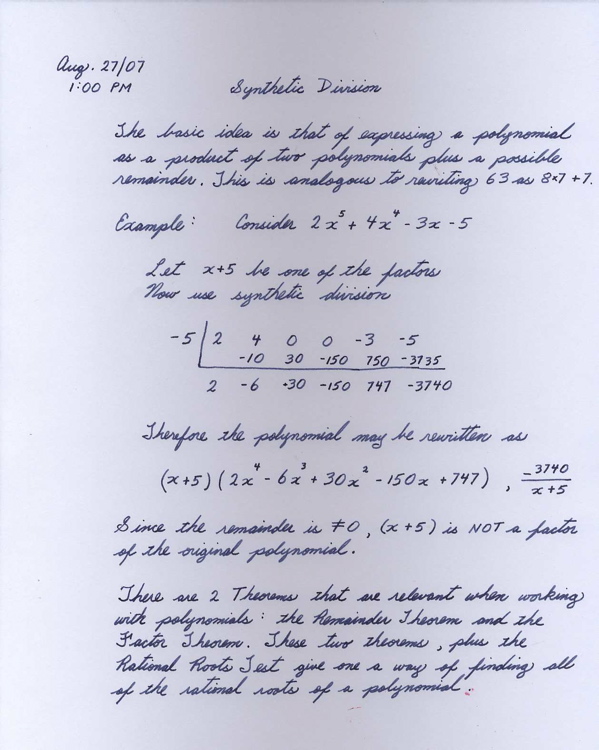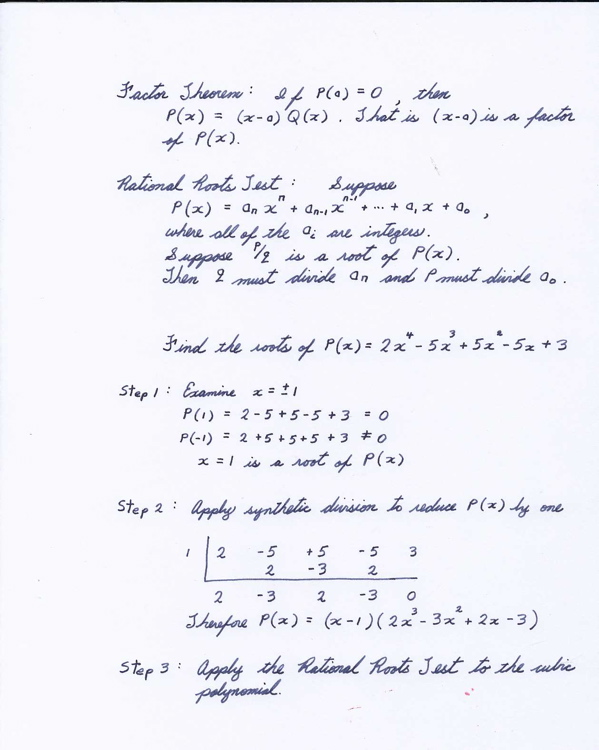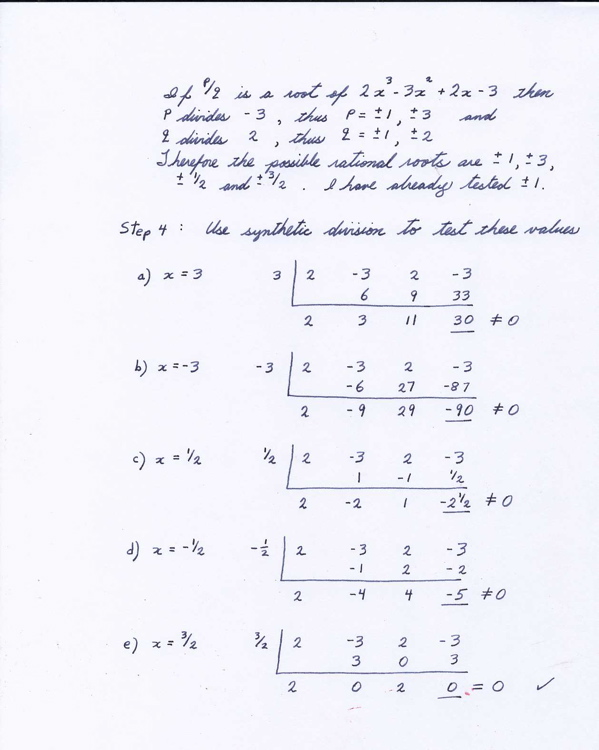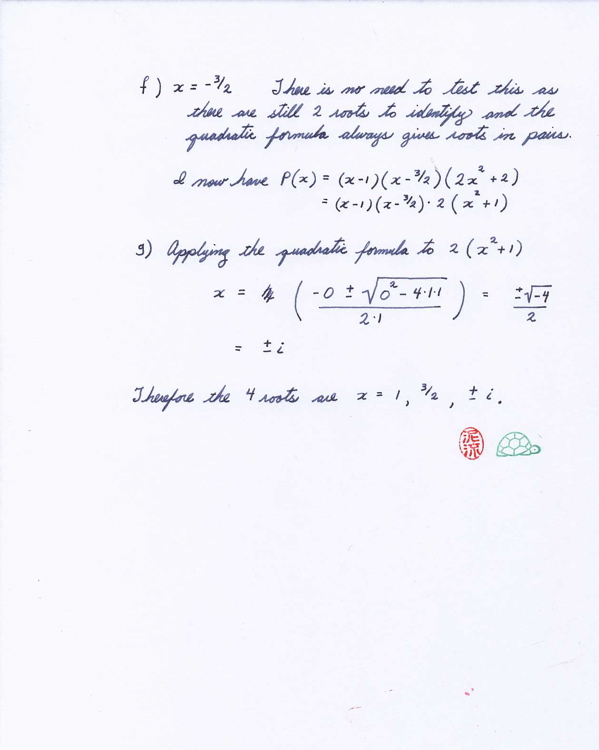
Journals 2007
Notes
Literature
Mathematics
Technology
Birding
ModelTrains
Philosophy
Psychology
Science
History
Time

Journals 2007
Notes
Literature
Mathematics
Technology
Birding
ModelTrains
Philosophy
Psychology
Science
History
Time
It is +8 C with a high forecast of +18 C. Sunrise 6:39 Sunset 20:27 Hours of daylight: 13:48
| Immediate | Description | Time |
|---|---|---|
| Literature | Continue reading "A Heartbreaking Work of Staggering Genius" by Dave Eggers | 2 hr |
| Mathematics | Make notes for material on finding the roots of polynomials | 3 hr |
| Mathematics | Complete exercises p. 11 - 12 from "The Mathematics Survival Kit" | 1 hr |
Continuing with the Weiner book. I have a choice of topics this morning. One would be to review some of the material on the Web about synthetic division of polynomials and also the Remainder Theorem, both with particular emphasis on the finding of rational roots of a polynomial. The second topic would be to continue with Weiner (p. 11 - 12) on Adding and Subtracting Polynomial Fractions.
Let's begin with synthetic division. This is a new topic for me. I do not recall ever doing this when I was an undergraduate. The PurpleMath website has an index where it places the topic of synthetic division under the category of Intermediate Algebra. There are a number of other topics that one could spend time with.
Once again, this raises the question of what one should study when engaged in a self-directed activity. There is no standard textbook, nor a fellow student, or a professor that can provide guidance. For example, one could go through all of the topics in the Purple Math website, or follow the sections in the Kelley book, or the Weiner book, or a myriad of other books. Each resource will include some topics and omit others.
I lean toward a compromise strategy. First, select a book that looks interesting. It should not be too difficult, nor too easy. Then follow it. But be alert to small deviations. When you encounter a topic that looks interesting follow it beyond the treatment in the book for a little while, usually by using google and the Web for additional information. But be sure to return to the book you are following. If, after a month or so, the book is not working well for you, select a different book.
Okay. I have done a little reading on synthetic division and think I have it under control. I can both do it, and I understand why it works. Easy to say. Now let's see if I can explain this in my own words, using a fountain pen.
I finally got around to actually doing this. Here are my notes:





This has been a very enjoyable couple of hours. I really think I have a good grasp of a topic that is new to me: using the Remainder Theorem and the Factor Theorem plus the Rational Factors Test to find the roots of a polynomial while using the Synthetic Division algorithm. This seems like a very nice place to wrap up the topic of Polynomials. I have a very good feeling about this at the moment.
As an aside, working my way through this material is very similar to working on the New York Times crossword puzzles. Both activities are enjoyable and give me a good feeling of satisfaction. I am at a similar level in both activities: beginner. It will be interesting to see where I am in another couple of months.